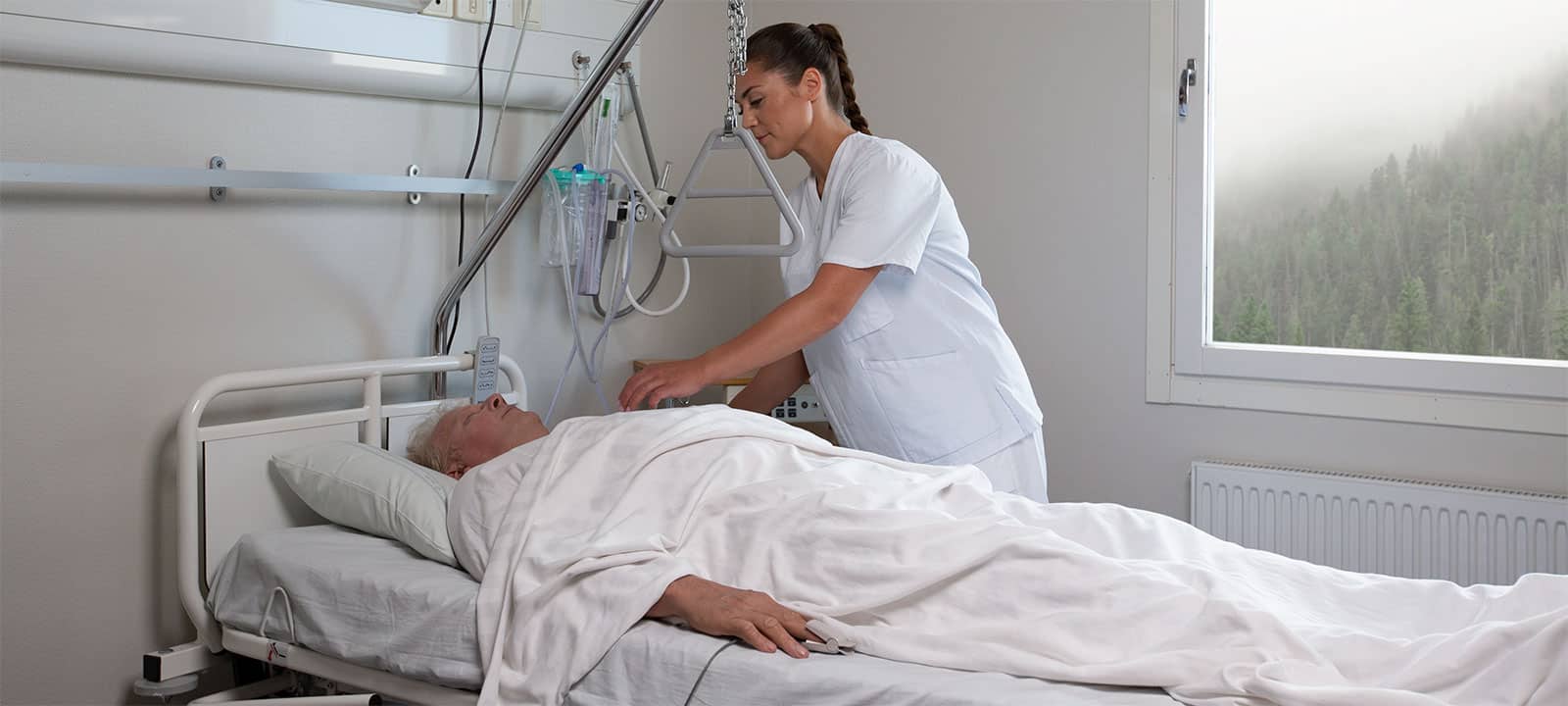
In Sweden, we procure advanced pressure-regulating mattresses for around SEK 100 million per year. At the same time, pressure ulcers are estimated to cost society around €2.8 billion every year. That's almost 30 times as much money!
Do you want to fight pressure ulcers in healthcare? Then you need to be equipped with the right knowledge, the right procedures and the right mattresses.
1. TIDEN ÄR AVGÖRANDE – handla i tid för att förebygga trycksår
How soon do pressure ulcers require attention? They can occur at any time, anywhere, but as soon as a patient is in the care of a healthcare provider, it is the provider's responsibility to prevent them. Report "Waiting times and patient flows in emergency departments" (National Board of Health and Welfare, February 2017) addresses long lengths of stay in the emergency department. The median waiting time is 3 hours and 9 minutes. The situation is even worse for patients over 80 years old, who have to wait on average 30 minutes longer.
The median waiting time for our oldest is therefore 3 hours and 39 minutes. One in ten patients over 80 has to wait at least 7 hours and 18 minutes to leave the emergency department. After that time, the patient may already have pressure ulcers of grade 1. Pressure ulcers are graded on a four-point scale, with category 4 being the most serious. According to the Care Guide, a risk assessment should be carried out on arrival in hospital or at the beginning of a period of care, whether the person is in a hospital or in a community health service.
The combination of longer waiting times and higher vulnerability puts our elderly at a much higher risk of pressure ulcers. This places increased demands on mattresses that provide good pressure relief. Unfortunately, many emergency mattresses today are poorly adapted for this. They have far too much pressure for people to be able to lie on them for so many hours at a time.
2. PRISVÄRT BÄTTRE ÄN BILLIGT - en bra madrass lönar sig i längden,
The mattresses we sleep on at home are rarely used for more than 8 hours a day. A medical mattress, on the other hand, is used up to 24 hours a day. This also means that it ages three times as fast as other mattresses, and the pressure-relieving properties of the mattress deteriorate with age. This must be borne in mind in healthcare, as it determines how often a mattress fleet needs to be renewed.
Once purchases are made, purchasing managers are often forced to navigate through capacity figures provided by manufacturers themselves and scientifically irrelevant concepts such as "user weight".
- User weight is a rather undefined concept, explains Valter Dejke, senior researcher at the RISE research institute.
It is unclear what is actually meant by the user weight the mattress can withstand. Is the aim to avoid injuries to the patient, to the mattress or to the bed?
- Even if everyone were to agree on what is meant, there is no consensus on a common measurement method. Therefore, the buyer is left at the mercy of much supplier discretion, says Valter Dejke.
3. OBJEKTIVA KRITERIER FÖR VAL AV MADRASS
The lack of consensus permeates the numbers that a buyer has to consider. Even if each supplier is 100% honest, it becomes impossible to make proper comparisons when each manufacturer uses different scales and measurement methods.
- You get different measurement results depending on which method you use," says Dejke. It's important to use the same method if the results are to be comparable.
It is against this background that RISE has developed the measurement method standard SS 876 00 13, which compares each product from a third-party perspective on the same premises. They have developed impression bodies that simulate the shape of selected parts of the human body. By applying a load to the impression bodies, pressure mats can be used to objectively assess different mattresses. Based on their measurement method standard is currently the wisest move in a mattress procurement.
4. MADRASSENS ÖVERDRAG PÅVERKAR TRYCKAVLASTNINGEN
The surface of the mattress is necessary for hygiene, otherwise every mattress would turn into a disposable mattress. Unfortunately, any surface layer impairs the pressure-relieving properties of the foam core. However, the extent of this degradation can vary considerably. Other factors also come into play. For example, the risk of pressure ulcers is reduced if the surface does not form folds under the patient. A creased surface causes shear and friction.
This requires prioritisation when choosing a mattress. Do you want a mattress with extra fire protection, or an extra durable fabric? If so, you will have to sacrifice pressure relief.
5. FÖREBYGGANDE INSPEKTIONER – Daglig vård och inspektion är viktigt
Once the mattress and the patient are in place, the caregiver can take relatively simple steps to prevent pressure ulcers:
- Make a daily skin inspection of pressure points.
- Avoid shear and friction by using, for example, sliding sheets and lifting aids.
- Protect the skin from moisture damage that can be caused by plastic materials, among other things.
- Make sure to change the position of the body at regular intervals so that the pressure points change, for example by using a turning schedule.
In this respect, it should be a matter of course for those responsible in each department to take advantage of their staff's often extensive experience of transfers. Their expertise is a valuable resource ready to be tapped without delay or cost increase.






